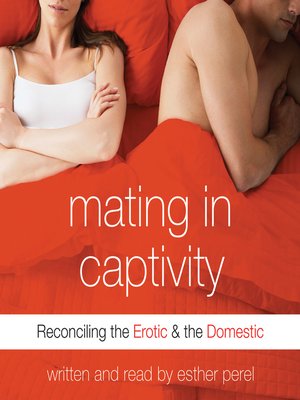

Desire – Love is about having, desire is about wanting. Love enjoys knowing everything about you desire needs mystery. One person for all our needs – In modern love, we put one person at the center of our life, and we expect this one person to fill every external role in our life, for this one person to fill all our needs.Įsther Perel writes, “Today, we turn to one person to provide what an entire village once did: a sense of grounding, meaning, and continuity”, and thus we find that, “It’s hard to generate excitement, anticipation, and lust with the same person you look to for comfort and stability.” Ģ. Perel gives her advice and tactics on how to find this balance. The thesis of Mating in Captivity is that if you’d like to create passionate, long-lasting relationship you’ll need find a balance between your love and your desire. On the other hand, when you have too much love you’re too comfortable, you have too much security, and you feel trapped. Love is about having desire is about wanting. When you have too much desire you’re insecure and anxious. In Mating in Captivity, Esther Perel asks the question, “How can you want, what you already have?” The main idea of Mating in Captivity in less than 100 words

The feeling after reading Mating In Captivity:Ī sense of clarity about the differences between love, desire and monogamy (three words that are often used to refer to the same thing).

We’ll go over a summary of some of the main points, our favorite takeaways, and our personal experiences applying these lessons to our lives. This week I’ll be chatting with Sarah Peck about the book Mating in Captivity by Esther Perel. Mating In Captivity by Ester Perel | Book Summary and Quotes Adjunct Prof at Columbia University Business School. Chris Castig Follow Co-founder of Console.xyz.


 0 kommentar(er)
0 kommentar(er)
